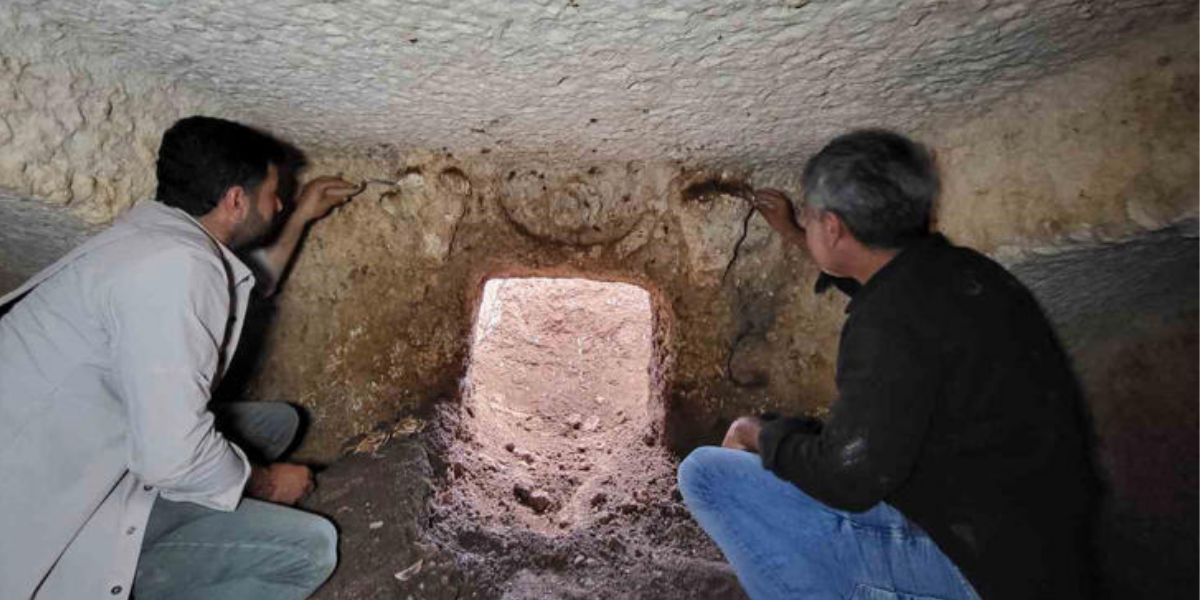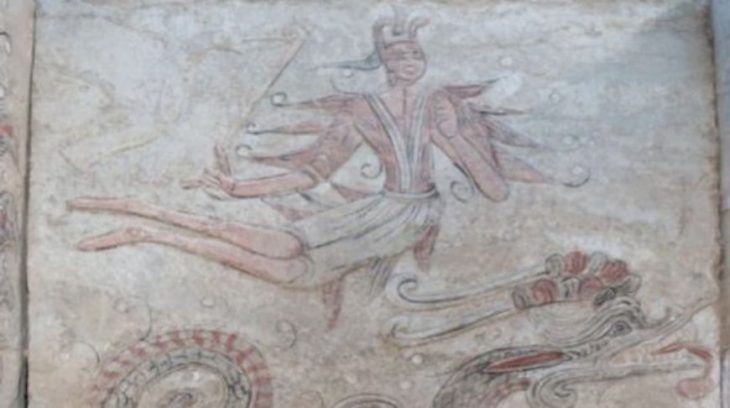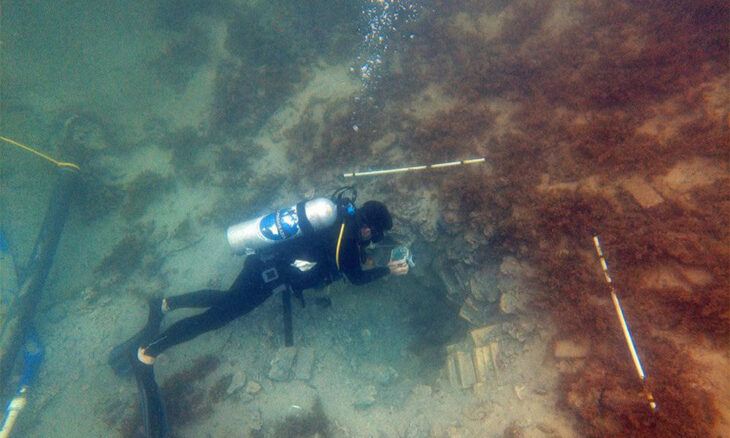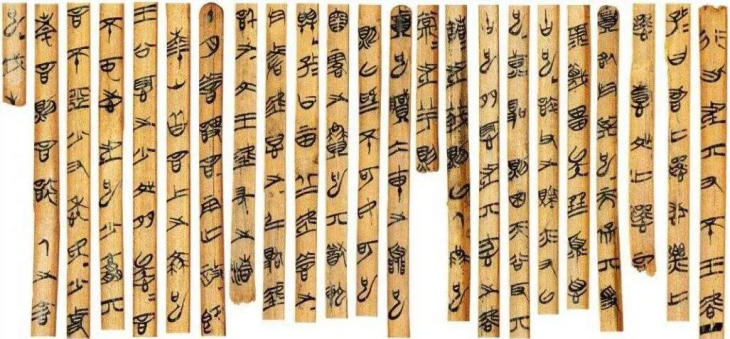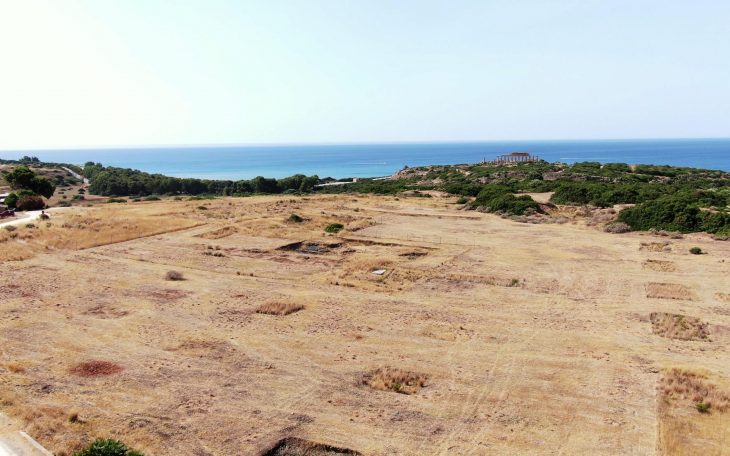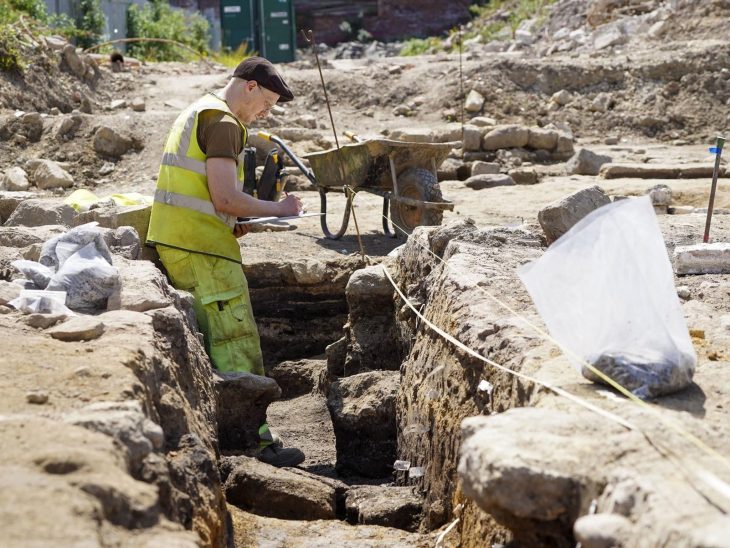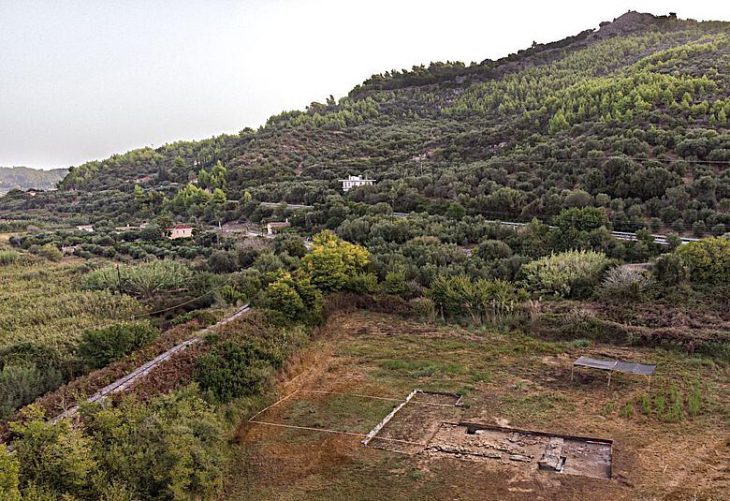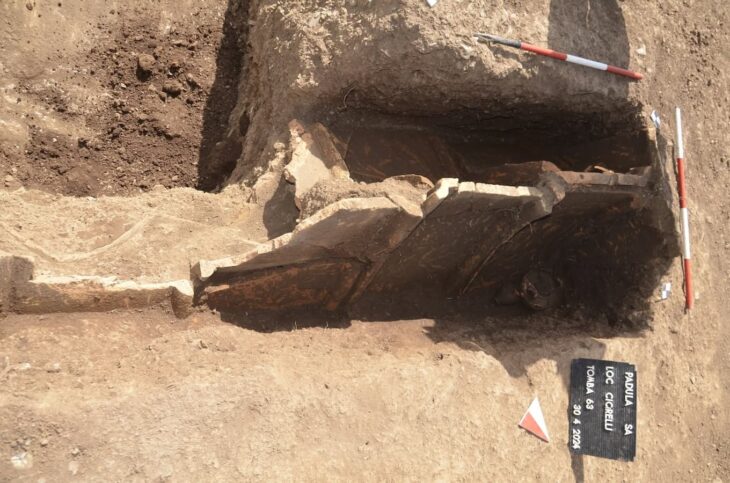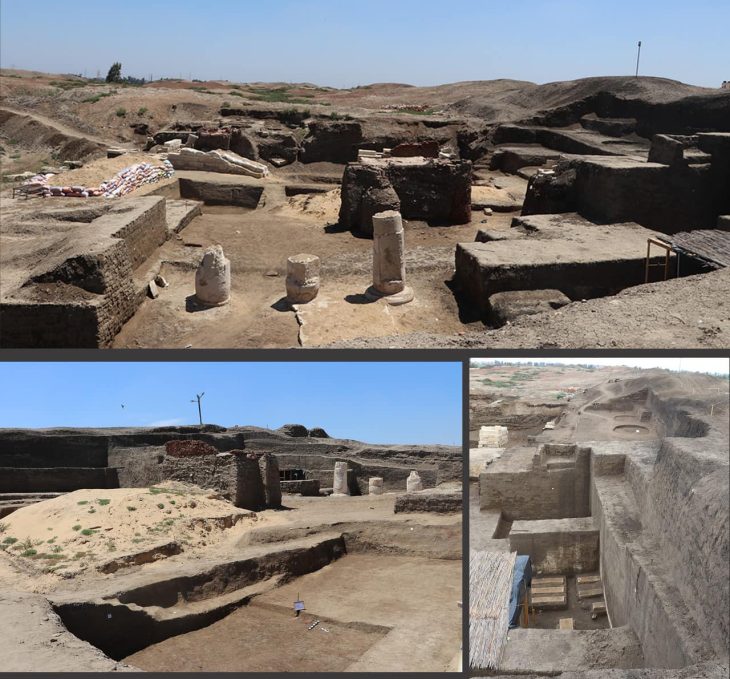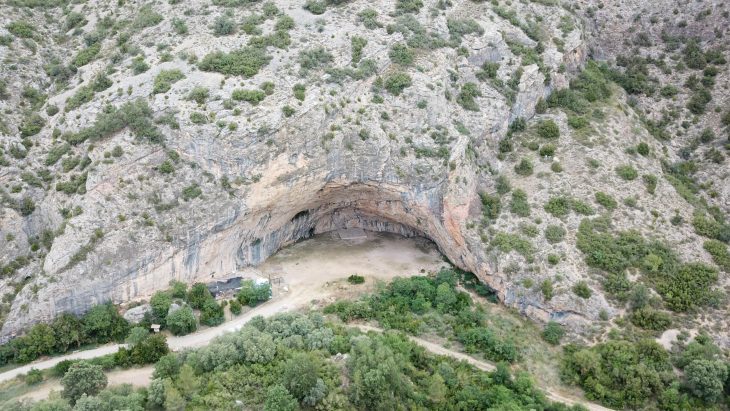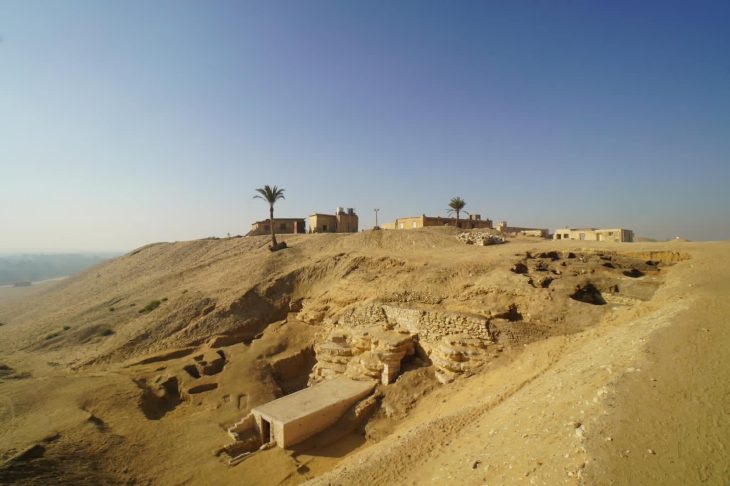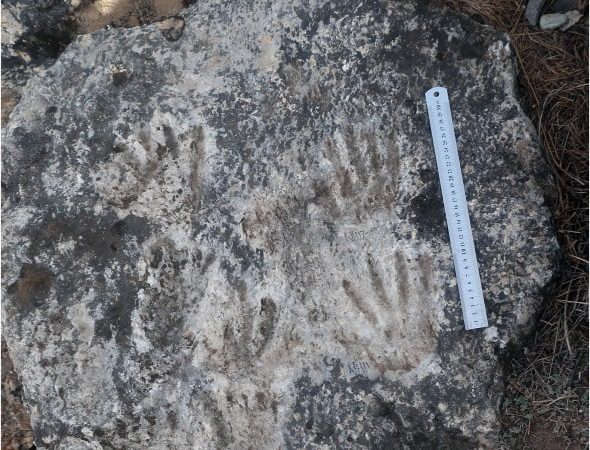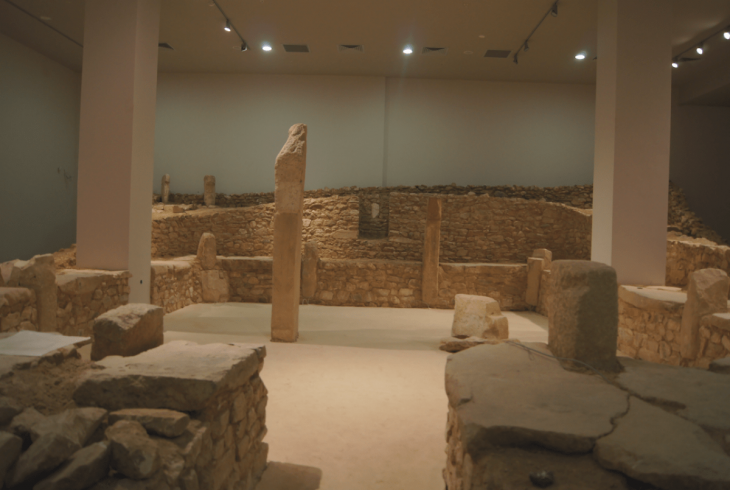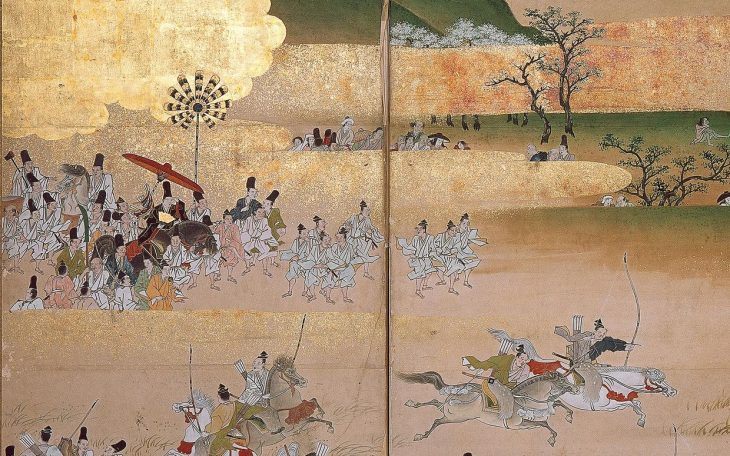In Türkiye, archaeologists have discovered a new 2000-year-old tomb protected by two bull heads during excavation and cleaning efforts in the ancient city of Tharsa, located near Kuyulu village on the Adıyaman-Şanlıurfa Highway, now known as Turuş Rock Tombs.
Turuş Rock Tombs belong to the Roman Period. The tombs were built by carving the bedrock from the ground downwards. The tombs are reached after 10-13 steps descending downwards. There are various figures and reliefs on the walls and doorways of some rock tombs.
Tharsa Ancient City, which is home to 60 previously unearthed graves, continues to reveal new finds every day. Excavations in the necropolis area began in 2024, and the team has recently discovered two additional rock tombs.
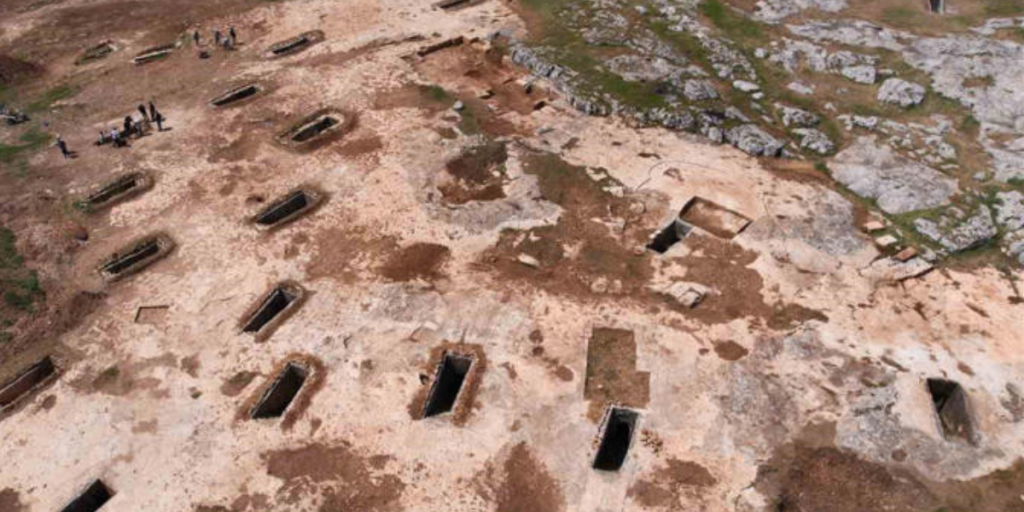
Archaeologists said the bull’s heads were in the grave because of the belief that they would help the grave’s owner cleanse himself of evil spirits.
The bull was the god Jupiter’s symbolic animal. The bull itself represents power and strength, plus a hint of unpredictability. The bull was also a symbol of the city of Athens and was depicted on many Athenian coins as a symbol of the city’s strength and power. In Roman coinage, the bull was often used to symbolize strength and fertility and was associated with the god Mars.
📣 Our WhatsApp channel is now LIVE! Stay up-to-date with the latest news and updates, just click here to follow us on WhatsApp and never miss a thing!!
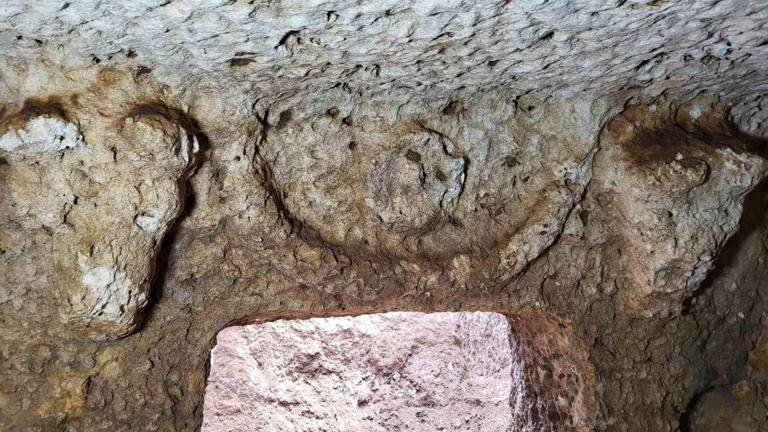
The entrance of the tomb, dating back to the Roman and Byzantine periods, features two bull heads (bucranium) and garland decorations at the entrance, with a rosette in the center. It comprises three arcosolium.
Mustafa Çelik, Deputy Director of Adıyaman Museum, said, “Tharsa Ancient City consists of 3 main archaeological areas: Big Mound, Small Mound and Necropolis Area. We started excavations in the necropolis area in 2024. We added 2 more rock tombs to the rock tombs we had previously uncovered. One of them is the rock tomb we identified today. This tomb, which consists of a main space and three arcosolium, has 2 bull’s head figures on the upper part of the entrance, which we call bukranyon in ancient times. In the middle part of the bull heads, there are decorations called girlants and rosettes. We continue our efforts to make this region a center of attraction for tourism.”
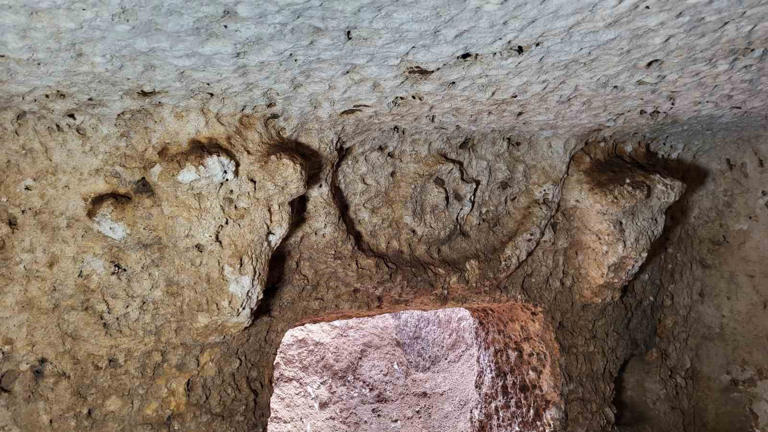
It is aimed to bring tourism to the region where 60 family cemeteries are located after the excavation works.
Cover Photo: IHA

